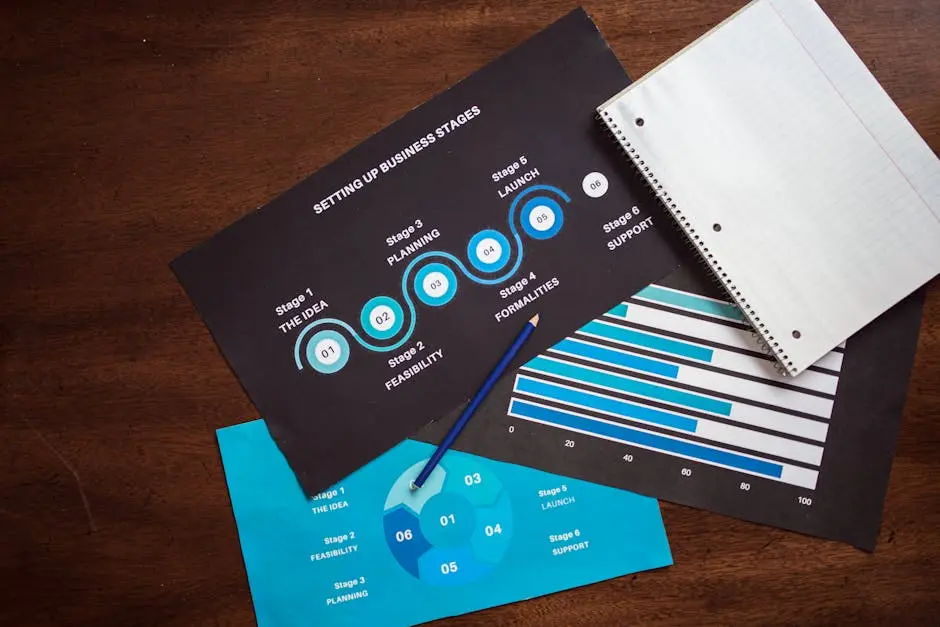Turning a product idea into reality can feel like a daunting journey. But, it doesn’t have to be! With a clear plan and strategic steps, you can transform that brilliant spark into a successful Minimum Viable Product (MVP). Here’s a simple guide to help you along the way.
1. Defining Your Core Idea
Begin by crystallizing your product idea. Clearly define what problem your product solves and who will benefit from it. Keeping your vision specific yet flexible is key at this stage.
Always remember, a solid foundation begins with understanding the essence of your product. It’s more than just having a great idea; it’s about knowing why your idea stands out and who your primary audience is. This essential groundwork acts as a touchstone throughout your development journey, ensuring that every decision aligns with your original intent.
2. Conducting Market Research
Understanding the market is crucial. Dive into research to explore your target audience, competitors, and market demands. This will help you identify gaps your product can fill.
Market research is a blend of art and science. Immerse yourself in the needs and behaviors of your prospective users; seek to understand not just what they want but why they want it. Align your findings with current trends in your niche to ensure your product is relevant. Engaging in forums and discussions platforms can also provide valuable user insights that numbers alone might miss.
3. Outlining Features and Prioritizing
List all potential features of your product and prioritize them. Focus on the core features that provide real value to users and differentiate your product from the competition.
When outlining features, it’s tempting to go all-in with creativity. However, it’s essential to distinguish between must-have features and those that are simply nice-to-have. Prioritization should be guided by user value and the feasibility of implementation, ensuring that each feature added enhances the user experience without overwhelming resources or timelines.
Remember, less is often more when it comes to MVPs. The objective is to deliver sufficient value to get early adopters onboard and gain insightful feedback, not to perfect the end product at this stage. Each feature should connect directly back to your core problem and resolution, keeping the MVP aligned with your overarching goals.
4. Creating a Prototype
Build a basic version of your product to visualize and test the concept. This prototype will help you gather early feedback and make necessary adjustments before full-scale development.
Prototyping helps in visualizing your ideas and solidifying them into a tangible form. It’s the perfect opportunity to experiment without the high stakes. Using tools like wireframes and mockups transforms abstract concepts into concrete visuals, revealing both potential strengths and weaknesses in your original design. Embrace this phase to refine your approach and enhance user interaction.
5. Testing with Real Users
Gather a group of potential users to test your prototype. Their feedback is invaluable for identifying strengths and areas of improvement, ensuring your product aligns with market needs.
User testing is about more than just spotting bugs—it’s about understanding how people interact with your product in real-world conditions. Encourage honest feedback and engage with users as they share their experiences, listening actively for any obstacles they encounter. This is a treasure trove of insights that can guide your iterative process toward a more user-centered design.
6. Iterating Based on Feedback
Use the feedback received to refine and enhance your product. Iteration is not just about fixing issues but also about optimizing user experience.
The iteration phase is your opportunity to apply all the feedback gathered from real users, creating a cycle of continuous improvement. Tweaking design elements, refining functionality, and even removing unnecessary features are all part of the mix. The aim is to align the product ever closer to user expectations while maintaining simplicity and elegance in the solution offered.
7. Building Your MVP
With comprehensive feedback and a refined prototype, start developing your MVP. Focus on functionality and usability, ensuring the main features are seamless.
Building your MVP is the culmination of the thoughtfully laid groundwork. Meticulous attention to detail ensures that core features operate harmoniously and intuitively, minimizing friction for users. Remember, an MVP is not a failure if basic functionality is polished; the goal is to prove concept viability and attract early adopters.
8. Launching to Your First Users
Introduce your MVP to a broader audience. At this stage, your aim is to validate your product in the real world, attracting initial users who can provide insights for further improvement.
The launch is as thrilling as it is informative. With the product in the hands of first users, you’ll begin to see how your concept integrates into everyday life. Monitor feedback closely, track user behavior analytically, and remain open-minded about potential product iterations based on user interaction.
9. Collecting Data and Analyzing Performance
Track user engagement and analyze performance metrics. This data will guide you in understanding how the product is being received and identifying potential expansion or pivot opportunities.
Data analysis transforms user interaction into valuable insights. Engage with key metrics such as user retention rates, usage statistics, and feedback to gauge product adoption and satisfaction levels. This step is crucial in determining whether to continue on the current path, pivot, or add new functionalities in the next iteration.
10. Preparing for Full-Scale Launch
With a successful MVP, and data-driven insights, plan your full-scale launch. Ensure your product is polished, all systems are optimized, and you’re ready to reach a wider market.
As you prepare for the full-scale launch, ensure that the product embodies the vision initially set forth. Robust systems and a strong marketing plan are the backbone of reaching broader audiences. This grand unveiling is a testament to the perseverance and dedication poured into the product from conception to reality. Here is where the dream meets the masses.


